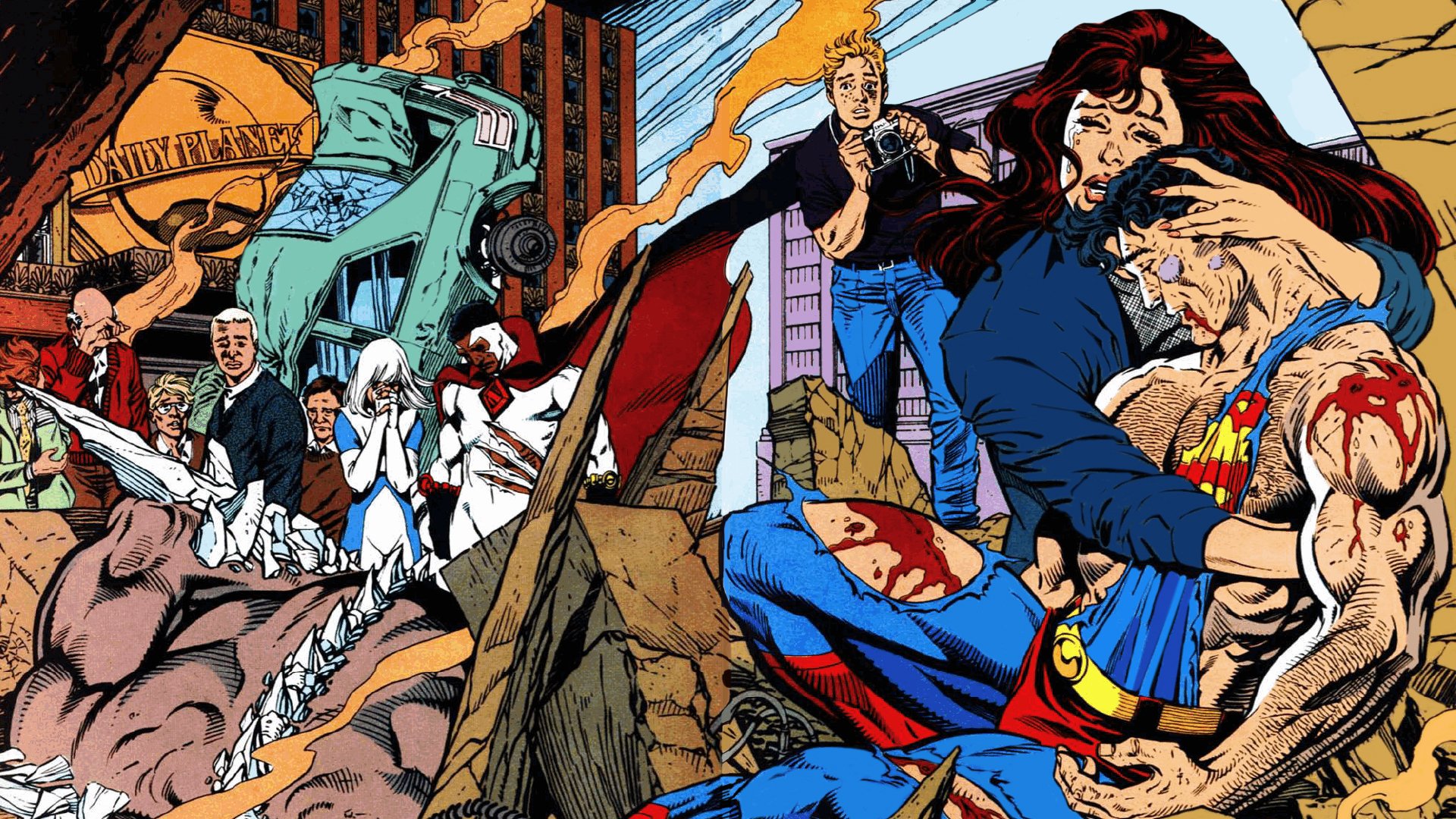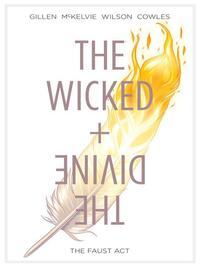You need to sign in or sign up before continuing.
Take a photo of a barcode or cover
adventurous
dark
funny
mysterious
sad
fast-paced
Plot or Character Driven:
A mix
adventurous
dark
mysterious
fast-paced
Plot or Character Driven:
Plot
Strong character development:
Yes
Loveable characters:
Yes
Diverse cast of characters:
Yes
Flaws of characters a main focus:
Yes
dark
mysterious
tense
fast-paced
Plot or Character Driven:
Character
Strong character development:
Complicated
Loveable characters:
Complicated
Diverse cast of characters:
Yes
Flaws of characters a main focus:
No
The artwork is beautiful, with bright colors, stunning images, and a wonderful overall theme. I think the premise is super creative and I am excited to continue with the series. But this first volume was CONFUSING. There is no world building, we gt thrown into the middle of the plot, and character introductions are extremely choppy. Not only did I struggle to figure out who was who, but we are lacking a lot of information about them. I hope more world building and explanations are provided in the following volume.
adventurous
dark
tense
fast-paced
Plot or Character Driven:
A mix
In November 2016, The Guardian's Guy Lodge celebrated the 20th anniversary of Baz Luhrmann's William Shakespeare's Romeo + Juliet by proclaiming that "20 years feels an entirely inappropriate anniversary for Luhrmann’s glitter-bomb of sound and fury and neo-disco and inchoate yearning. William Shakespeare’s Romeo + Juliet was never meant to reach this age: it might be the single most teenaged film ever fashioned." Later in the piece, Lodge expounds upon the notion that Romeo + Juliet is the "most teenaged film ever fashioned" by writing, "it felt as new and as dizzy and as overwhelming as the advent of adolescence itself." Lodge's use of "fashion" (the verb form) and "advent" are suggestive and thematically appropriate for a film like Romeo + Juliet. Like many of Luhrmann's cinematic efforts, Romeo + Juliet feels distinctly produced and fabricated. When executed correctly, Luhrmann's genius is visible in those moments when characters rupture the "glitter-bombed" facade to express and experience feelings and emotions that seem in opposition to Luhrmann's hyper-stylized aesthetic (Mercutio's "Queen Mab" soliloquy is a fine example).
21 years ago Luhrmann successfully synthesized a canonical English play with, as Lodge characterizes it, his "flushed sugar rush" of an aesthetic. And as I read Volume 1 of The Wicked + The Divine, I could not help but think that Baz Luhrmann undoubtedly made a comic book.
Beyond the glitter and bombastic color palette, The Wicked + The Divine is a deeply thoughtful book that blends existential concerns with identity politics. The gender fluidity of the principal characters in conjunction with the pop star, discotheque setting makes The Wicked + The Divine a potentially fruitful text for queer readings of contemporary comics.
It is not new or thoughtful to suggest that comic books communicate through the presentation of faces, but The Wicked + The Divine uses faces in profoundly affecting ways. In his analysis of Romeo + Juliet, Lodge argues that "We tend to remember the hyperactivity of any Luhrmann film foremost, yet so much narrative here is articulated through faces and gazes." Furthermore, those moments when Luhrmann focuses on faces are precisely those moments when the film resisting its frenetic self-propulsion. For example, compare and contrast Romeo's face immediately after he murders Tybalt to Luci's face moments before her death (2nd panel).


The placement of blood on each face is interesting, but the way each character's resolve and determination has evaporated is far more compelling. Both stories show its audience the degree to which hubris define each character (Romeo and Luci), but here, that arrogance and excessive certainty has disappeared.
To the surprise of no one, Luhrmann retains the aesthetic beauty and symmetry of Romeo and Juliet's faces once they die, even though Juliet dies by turning a gun to her temple. Kieron Gillen makes a different choice.

More often than not, when characters in movies die, their faces remain unspoiled. The still image of the dead face while confirmation of the death in question, is also a contradictory act of voyeurism. That is to say, we see in the dead face what is ostensibly private and reserved for an exclusive audience (if any audience at all). As a culture, we conceptualize the ideal death as one of extreme privacy. Many of us fantasize about an obituary that may read: "Colin Cox died in the privacy of his home," or more enviable, "quietly in his sleep." For the latter in particular, the dead face lacks an audience, and once the face and body are discovered, it is long after the moment of death. But the dead face becomes a public artifact as well because more often than not, it is also placed on display during wakes, for examples. In this panel, Gillen makes a profoundly radical choice by showing his reader what is typically hidden behind a casket (the deformed or in this case combusted face at the moment of death) in full, public view. There's a short circuit at play because what should remain completely private becomes completely public.
Comic book deaths are so often public affairs. In Superman (Volume 2) #75, Superman's death is also a public, voyeuristic event.

This panel is eerily similar to the panel above from The Wicked + The Divine. Funnily enough, both panels have a person holding a camera. The use of faces and public deaths in comic books offer the reader a troubling reminder of a statistical probability that consumerist-capitalist culture encourages everyone to ignore: you will die, your wishes (despite your excessive consumption) will not be fulfilled, and your death will not be graceful.
21 years ago Luhrmann successfully synthesized a canonical English play with, as Lodge characterizes it, his "flushed sugar rush" of an aesthetic. And as I read Volume 1 of The Wicked + The Divine, I could not help but think that Baz Luhrmann undoubtedly made a comic book.
Beyond the glitter and bombastic color palette, The Wicked + The Divine is a deeply thoughtful book that blends existential concerns with identity politics. The gender fluidity of the principal characters in conjunction with the pop star, discotheque setting makes The Wicked + The Divine a potentially fruitful text for queer readings of contemporary comics.
It is not new or thoughtful to suggest that comic books communicate through the presentation of faces, but The Wicked + The Divine uses faces in profoundly affecting ways. In his analysis of Romeo + Juliet, Lodge argues that "We tend to remember the hyperactivity of any Luhrmann film foremost, yet so much narrative here is articulated through faces and gazes." Furthermore, those moments when Luhrmann focuses on faces are precisely those moments when the film resisting its frenetic self-propulsion. For example, compare and contrast Romeo's face immediately after he murders Tybalt to Luci's face moments before her death (2nd panel).


The placement of blood on each face is interesting, but the way each character's resolve and determination has evaporated is far more compelling. Both stories show its audience the degree to which hubris define each character (Romeo and Luci), but here, that arrogance and excessive certainty has disappeared.
To the surprise of no one, Luhrmann retains the aesthetic beauty and symmetry of Romeo and Juliet's faces once they die, even though Juliet dies by turning a gun to her temple. Kieron Gillen makes a different choice.

More often than not, when characters in movies die, their faces remain unspoiled. The still image of the dead face while confirmation of the death in question, is also a contradictory act of voyeurism. That is to say, we see in the dead face what is ostensibly private and reserved for an exclusive audience (if any audience at all). As a culture, we conceptualize the ideal death as one of extreme privacy. Many of us fantasize about an obituary that may read: "Colin Cox died in the privacy of his home," or more enviable, "quietly in his sleep." For the latter in particular, the dead face lacks an audience, and once the face and body are discovered, it is long after the moment of death. But the dead face becomes a public artifact as well because more often than not, it is also placed on display during wakes, for examples. In this panel, Gillen makes a profoundly radical choice by showing his reader what is typically hidden behind a casket (the deformed or in this case combusted face at the moment of death) in full, public view. There's a short circuit at play because what should remain completely private becomes completely public.
Comic book deaths are so often public affairs. In Superman (Volume 2) #75, Superman's death is also a public, voyeuristic event.

This panel is eerily similar to the panel above from The Wicked + The Divine. Funnily enough, both panels have a person holding a camera. The use of faces and public deaths in comic books offer the reader a troubling reminder of a statistical probability that consumerist-capitalist culture encourages everyone to ignore: you will die, your wishes (despite your excessive consumption) will not be fulfilled, and your death will not be graceful.
Only rating this for myself; it was ok, it just didn't grab me.
The artwork was stunning! I would have continued the series just for the art alone, but thankfully the plots pretty good too ^_^







